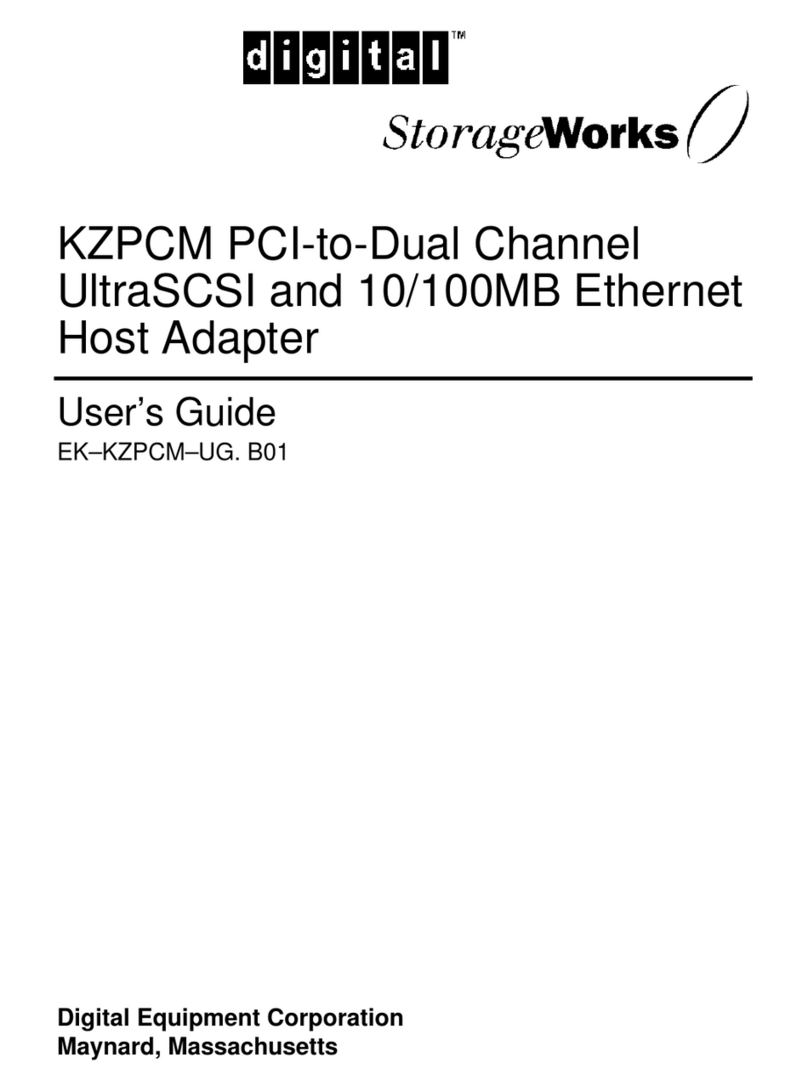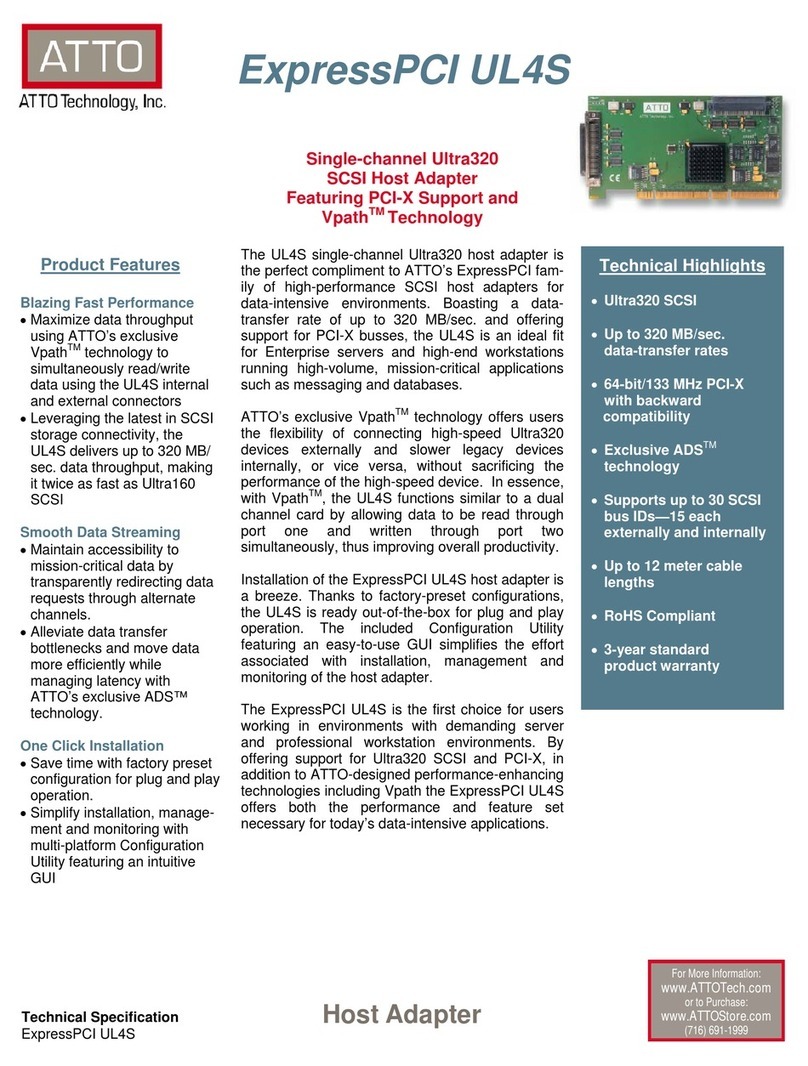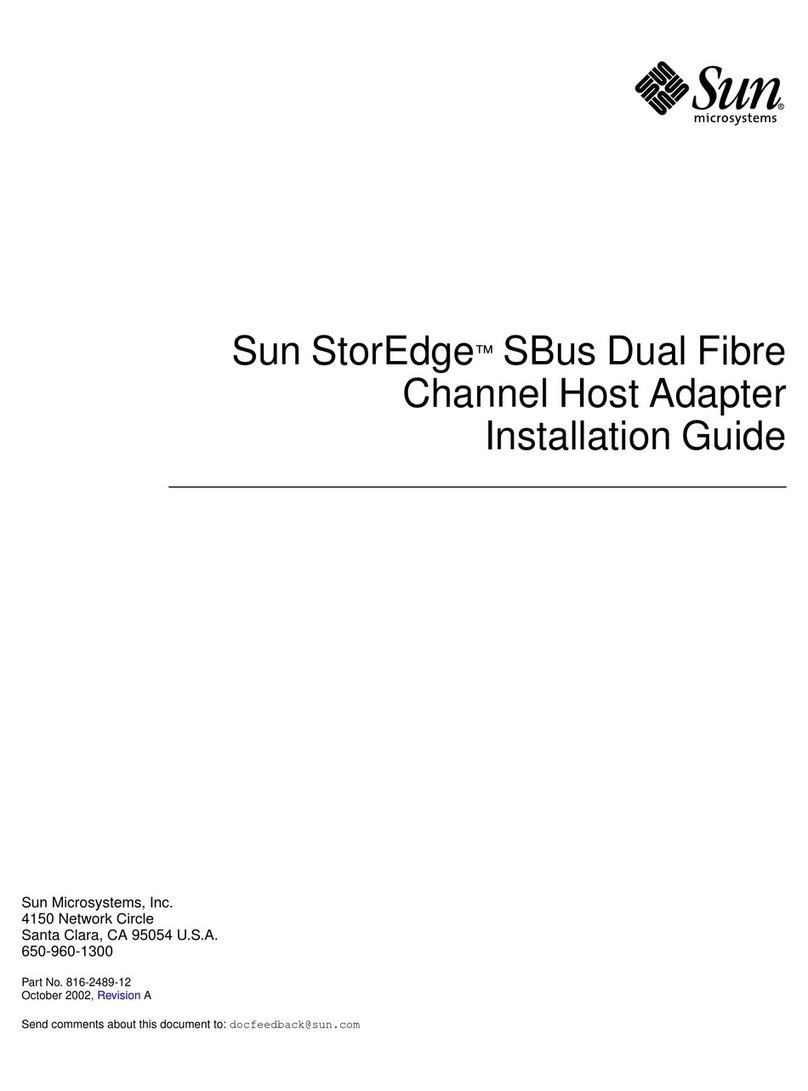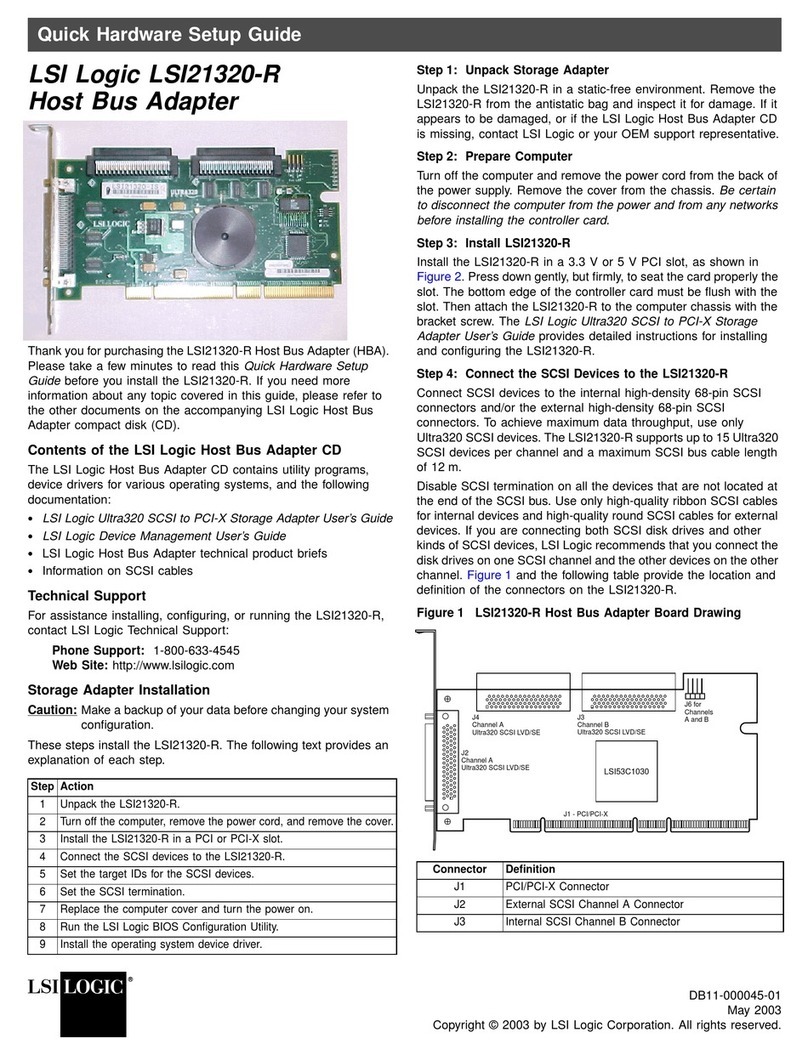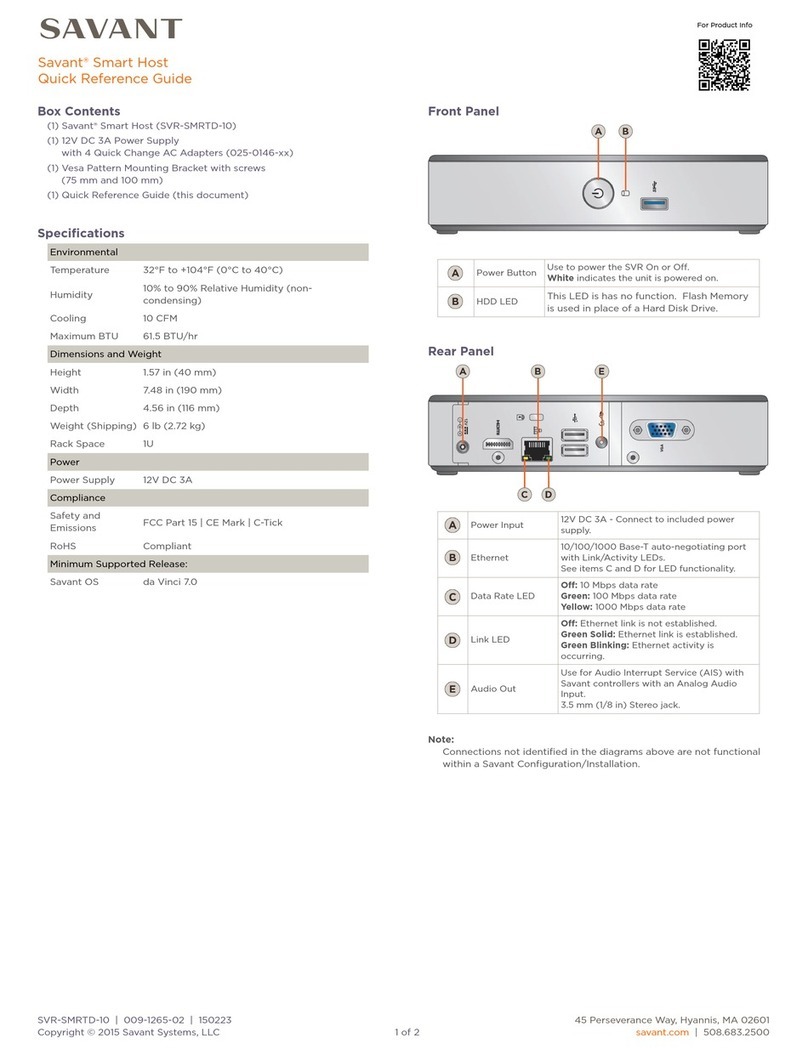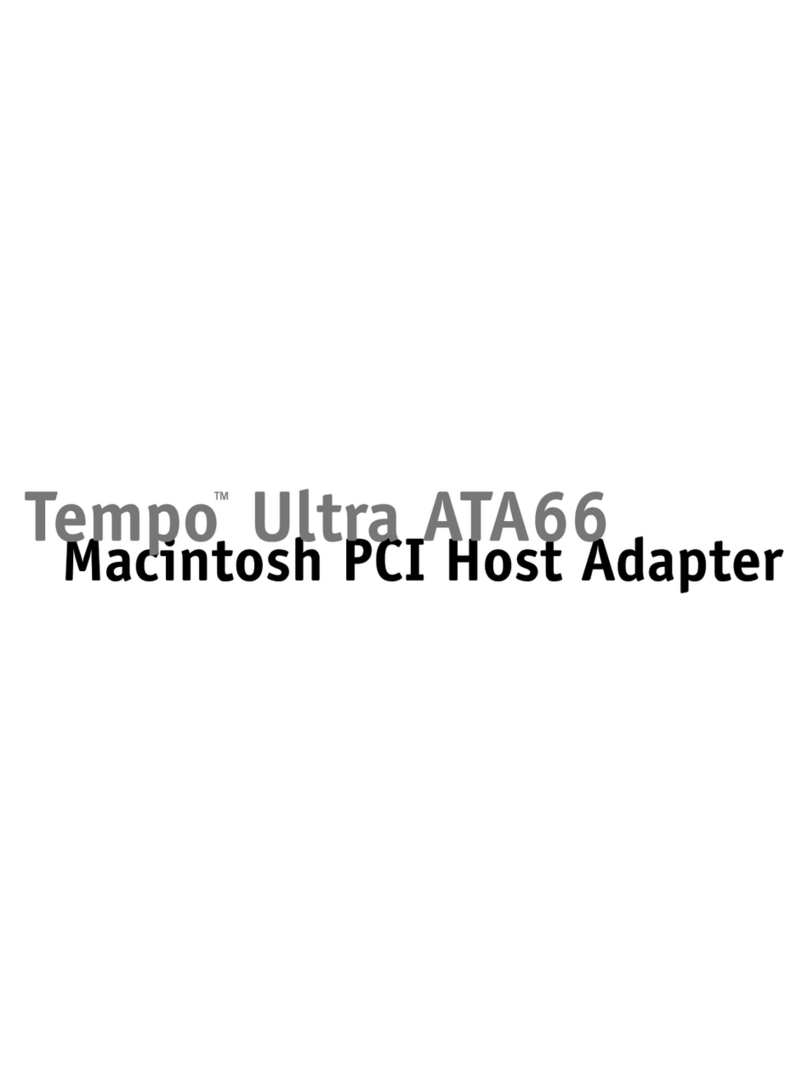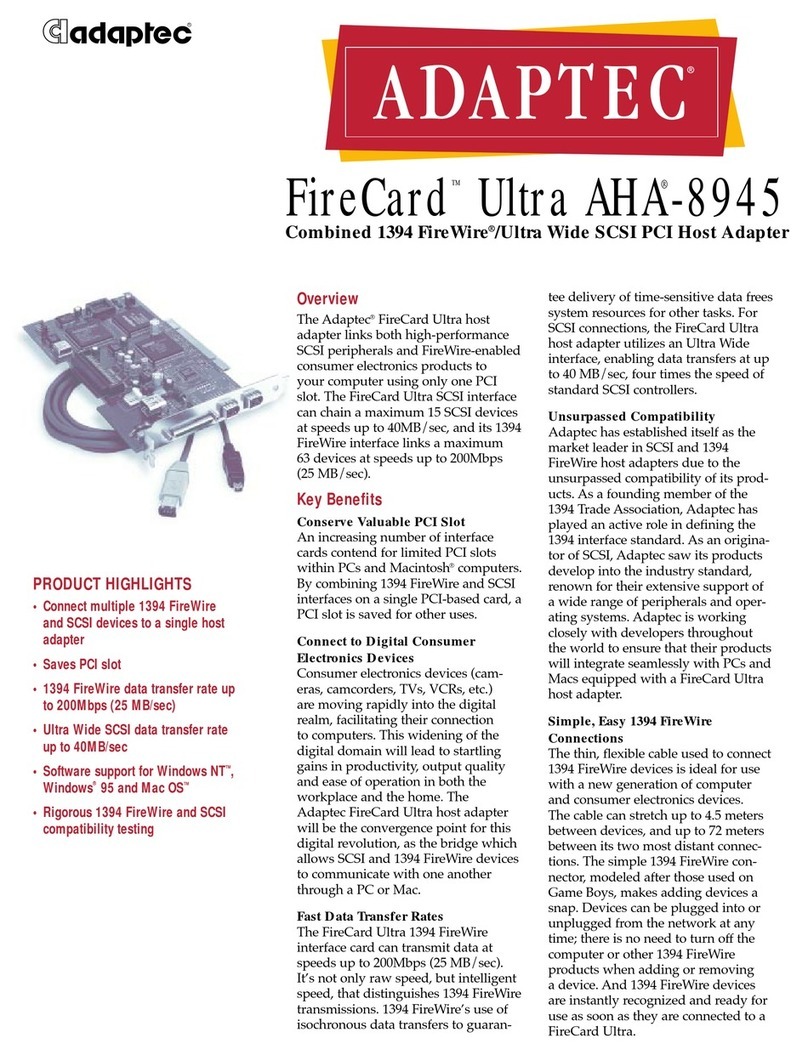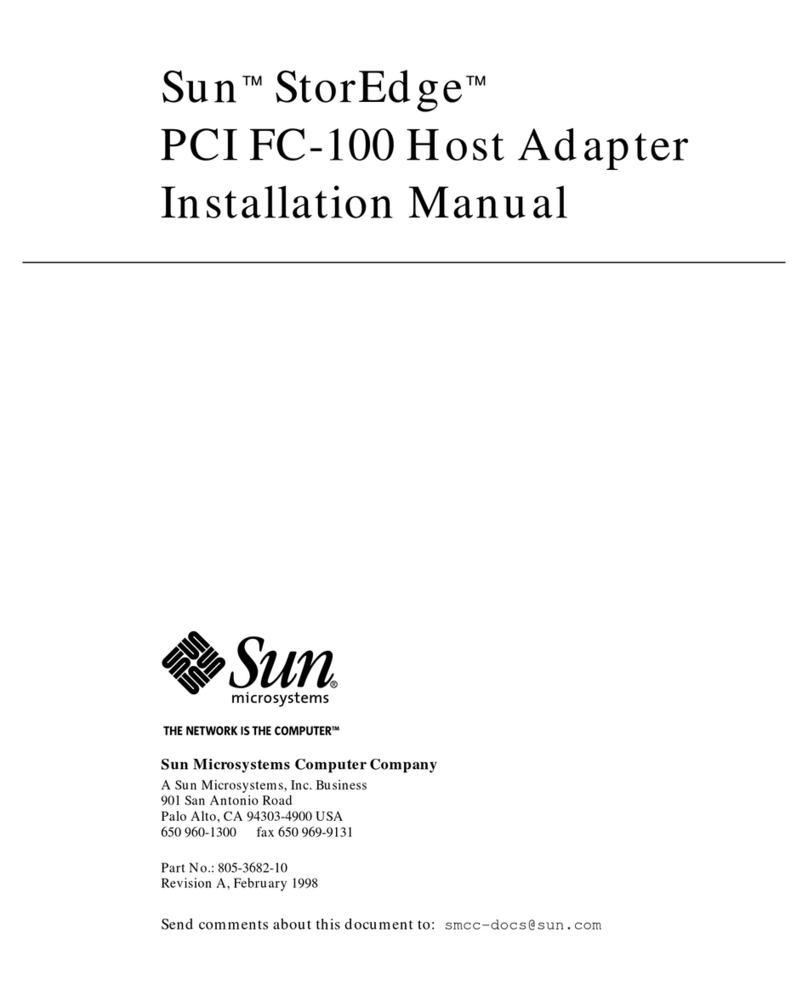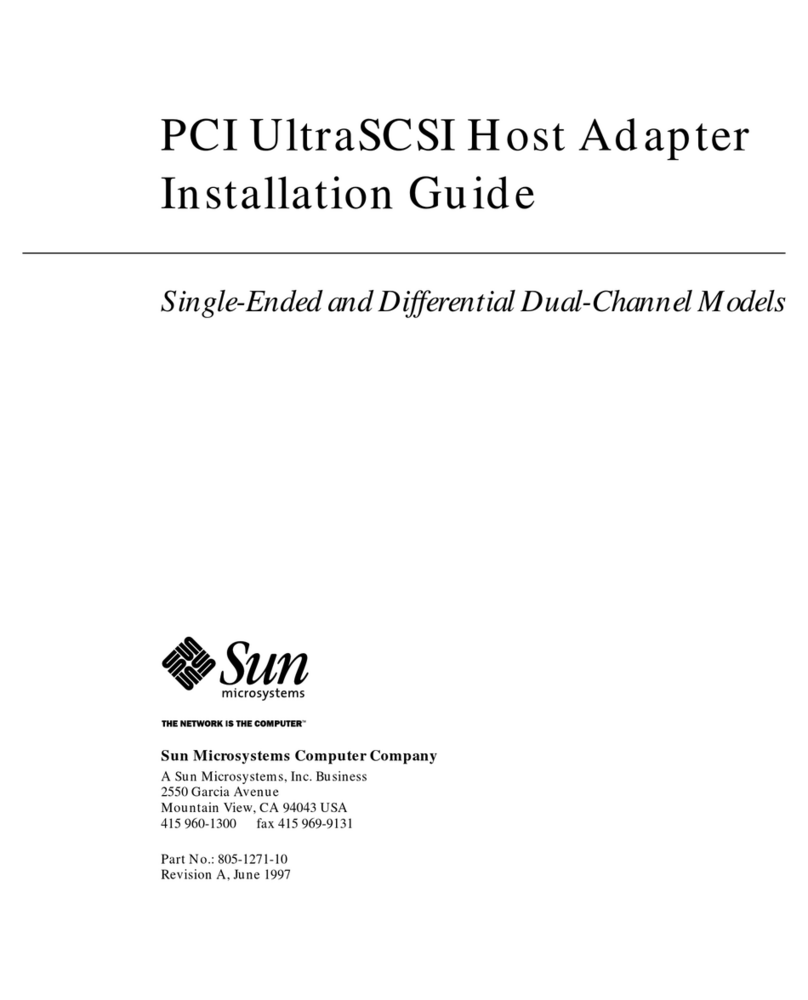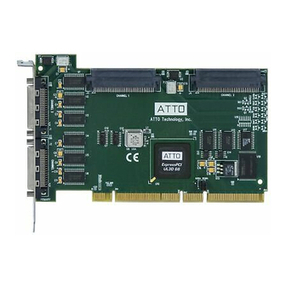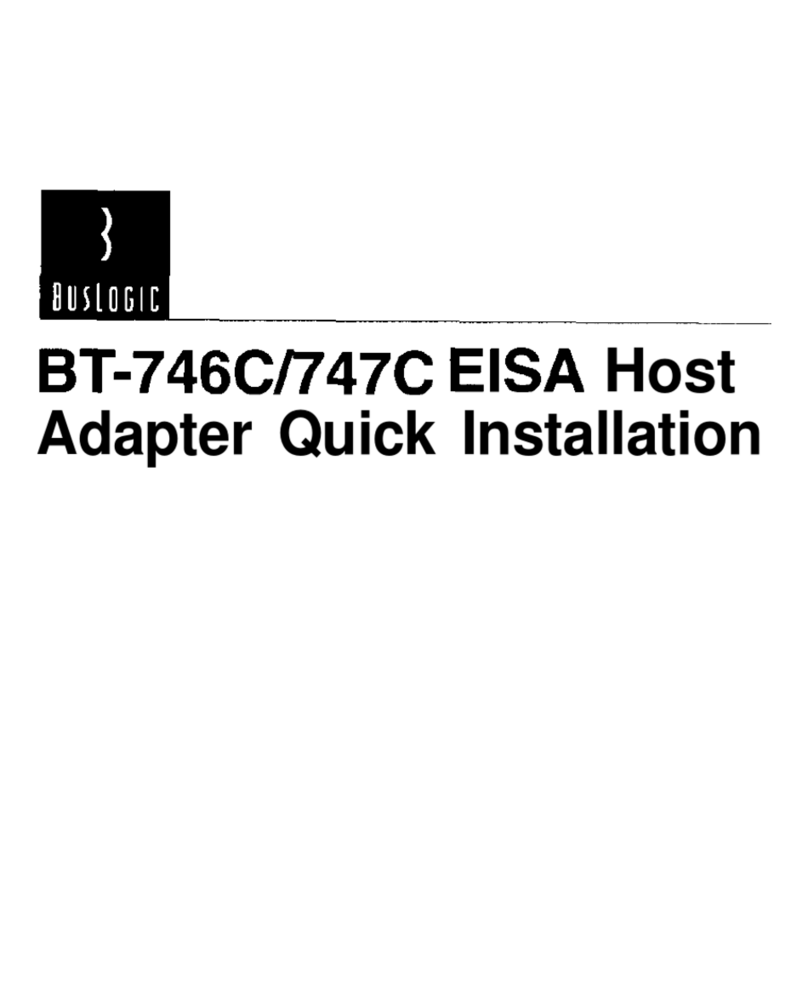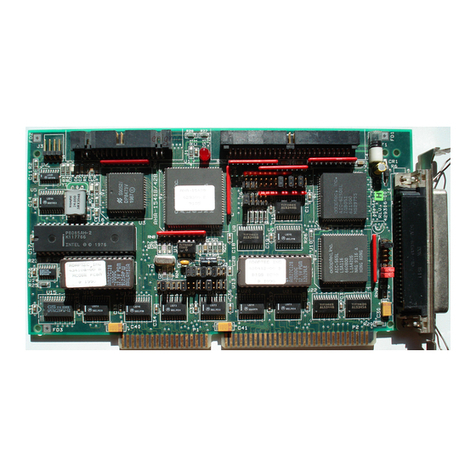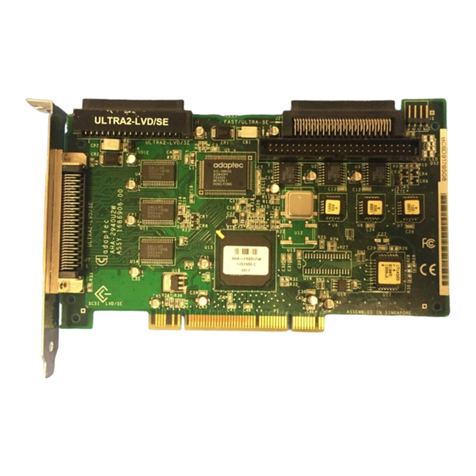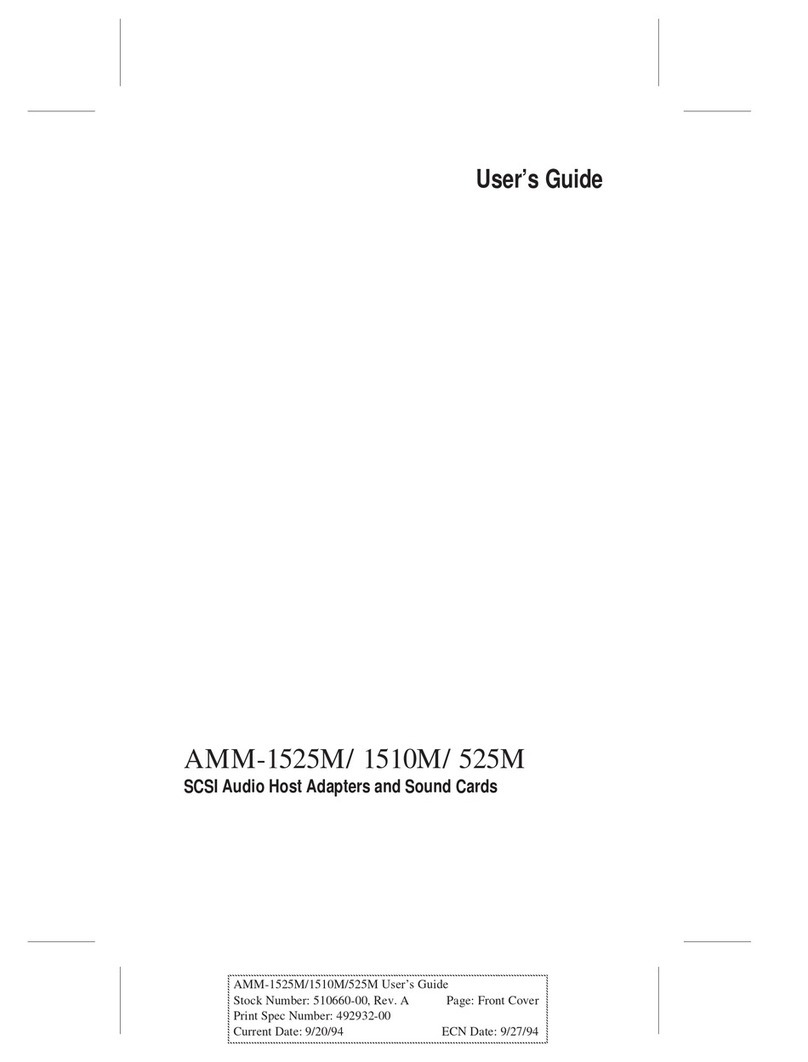
Host Adapter SCSI Terminators ON. Use this option
to set adapter SCSI termination. Only terminators on
devices at both ends of the SCSI chain should be
turn4
on.
(Def=Yes)
Device Configuration
Enable Fast Transfer (10MByte). Many
devices arc ca-
pable of transferring data across the SCSI bus at 5 to 10
MBytes/set.
This option can increase performance in
some applications if the attached device can also sup-
port the faster
10
MBytc/scc data rate.
Used
together
with the En&e Sync
Ne,@iation
option.
(Def=Yes)
Enable Sync Negotiation. U
SC
this option to enable the
adapter to initiate the synchronous data transfer
ncgo-
tiation bctwccn itself and
each
SCSI dcvicc connected
to the SCSI bus.
(Def=Yes)
Enable Disconnection.
Use
this option to enable or
dis-
able SCSI disconnection on each target device.
When
enabled, it allows SCSI devices to perform seek opera-
tions in
parallcl
and thus improvcovcrall SCSI bus
pcr-
formance.
(Drf=Yrs)
BIOS Sends Start Unit Command. This option allows
you to specify the SCSI dcviccs whose motor spin up is
sequentially controlllti by BIOS at power-up.
(Def=No)
Ignore in BIOS Scan. This option
lets
you exclude
SC’-
lcctcd
drives
from BIOS scan and registration.
(Def=No)
Advanced Configuration
Host Adapter BIOS Enabled. This read-only field dis-
plays whether BIOS is
enabled
or disabled for this
adapter.
Host Adapter BIOS
Uses INT
19 for System
Boot.This
option allows you to include or exclude the adapter
on-
board BIOS in the DOS boot process.
(Def=Yes)
Host Adapter BIOS Supports DOS Space
>
1GB.
This
option
cnablcs
the adapter onboard BIOS to support up
to
8
Gigabytcs per drive of DOS disk space. The
>
7
CByte support must be turned on under the following two
conditions:
(1)
the combined space of all the DOS parti-
tions exceeds 1 GByte or (2)
>
1 GByte disk accesses are
required to boot the operating system.
(Def=No)
BIOS Supports Removable Disks as Fixed Disks.
This
option enables the adapter BIOS to register removable
disks as fixed disks and access them via Interrupt 13H.
(Def=No)
BIOS Supports
>
2 Drives (DOS 5.0 or Above). This
option turns on BIOS support for more than two hard
disk devices on the SCSI bus.
(Def=Yes)
Enable BIOS Interrupt Mode. Enable if your version
of DOS is multitasking (e.g., PC-MOS).
(Def=Yes)
Support Floptical Drive. When this option is enabled,
BIOS registers and controls floptical devices.
(Def=No)
Enable SCSI Bus Reset. When this option is cnablcd,
the adapter asserts a SCSI bus reset signal upon dctcct-
ing a hard
reset.
(Def=Yes)
Resewed RAM for BIOS access (Segment: Offset) 0.
U
SC
this
option to allocate system memory for BIOS
p”-
ramcter storage.
(Def=XXI)
Set Host Adapter I/O Port Address as Default. This
option is always enabled for this product.
Step
8.
Testing Adapter Connectivity
Use
the
DMA Test on
l/O
Port option on
the
AutoSCSI
Diagnostics Menu to
test
adapter
connectivity to the
motherboard. This test writes and
rads
data bctwccn
the adapter and the motherboard. Press
<ESC>
to end
the test. If the
test
fails,
check
your
cable
connections.
Step 9. Formatting the Hard Drive
Because most off-the-shelf hard drives are factory
for-
matted, it is unlikely that you
need
to perform this
pn)-
cedurc and you may
proceed
to
Step
10. If, however,
you have an un-formatted disk, or if you
arc
expcricnc-
ing problems with your hard drive that indicate the
need for a low-level format, use the Format Disk option
on the
AutoSCSI
Utilities Menu.
Caution: This procedure will eruse everything on your
drive.
Hack
up your hard drive
before
proceeding.
The format duration dcpcnds on the
size
of your hard
drive. You cannot stop the format once it’s started.
Once it is completed, you may run the Verify Disk op-
tion to check the format.
Step 10. Setting Up the Hard Drive
You will need to take the following steps to configure
your hard drive for operation:
n
Create a partition on the drive for your operating
system and high-level format the drive.
7
8
